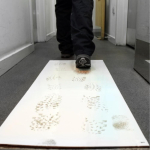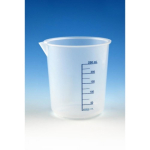Analysis Note
The biological activity of TNF-α is measured by the cytolysis of murine L929 cells.
Application
Tumor Necrosis Factor-? (TNF?) human has been used:to analyze the effects of cytokine TNF?-stressed human neuronal and glial (HNG) cellsto investigate the molecular mechanisms of TNF?-mediated prolyl-4 hydroxylase ?1 (P4H?1) suppression to induce death-receptor-mediated apoptosis in HeLa cells.
TNF-α include stimulating growth of human fibroblasts and other cell lines activating polymorphonuclear neutrophils and osteoclasts and inducing interleukin-1, prostaglandin E2, and collagenase production.
Biochem/physiol Actions
Tumore necrosis factor-α (TNF-α), also known as cachectin, is expressed as a 26 kDa membrane bound protein and is then cleaved by TNF-α converting enzyme (TACE) to release the soluble 17 kDa monomer, which forms homotrimers in circulation. TNF-α plays roles in antitumor activity, immune modulation, inflammation, anorexia, cachexia, septic shock, viral replication and hematopoiesis. TNF-α is expressed by a great variety of cells, with numerous inductive and suppressive agents. Primarily, TNF-α is produced by macrophages in response to immunological challenges such as bacteria (lipopolysaccharides), viruses, parasites, mitogens and other cytokines. TNF-α is cytotoxic for many transformed cells (its namesake activity) but in normal diploid cells, it can stimulate proliferation (fibroblasts), differentiation (myeloid cells) or activation (neutrophils). TNF-α also shows antiviral effects against both DNA and RNA viruses and it induces production of several other cytokines. Although TNF-α is used in clinical trials as an antitumor agent, Sigma′s cytokine, growth factor and hormone products are for research only. TNF-α and the related molecule TNF-β (LT-α) share close structural homology with 28% amino acid sequence identity and both activate the same TNF receptors, TNFR1 and TNFR2. Mouse and human TNF-α share 79% amino acid sequence identity. Unlike human TNF-α, the mouse form is N-glycosylated.
Physical form
Lyophilized from a 0.2 µm-filtered buffer solution containing 3mM Tris-HCl and 5% trehalose.











